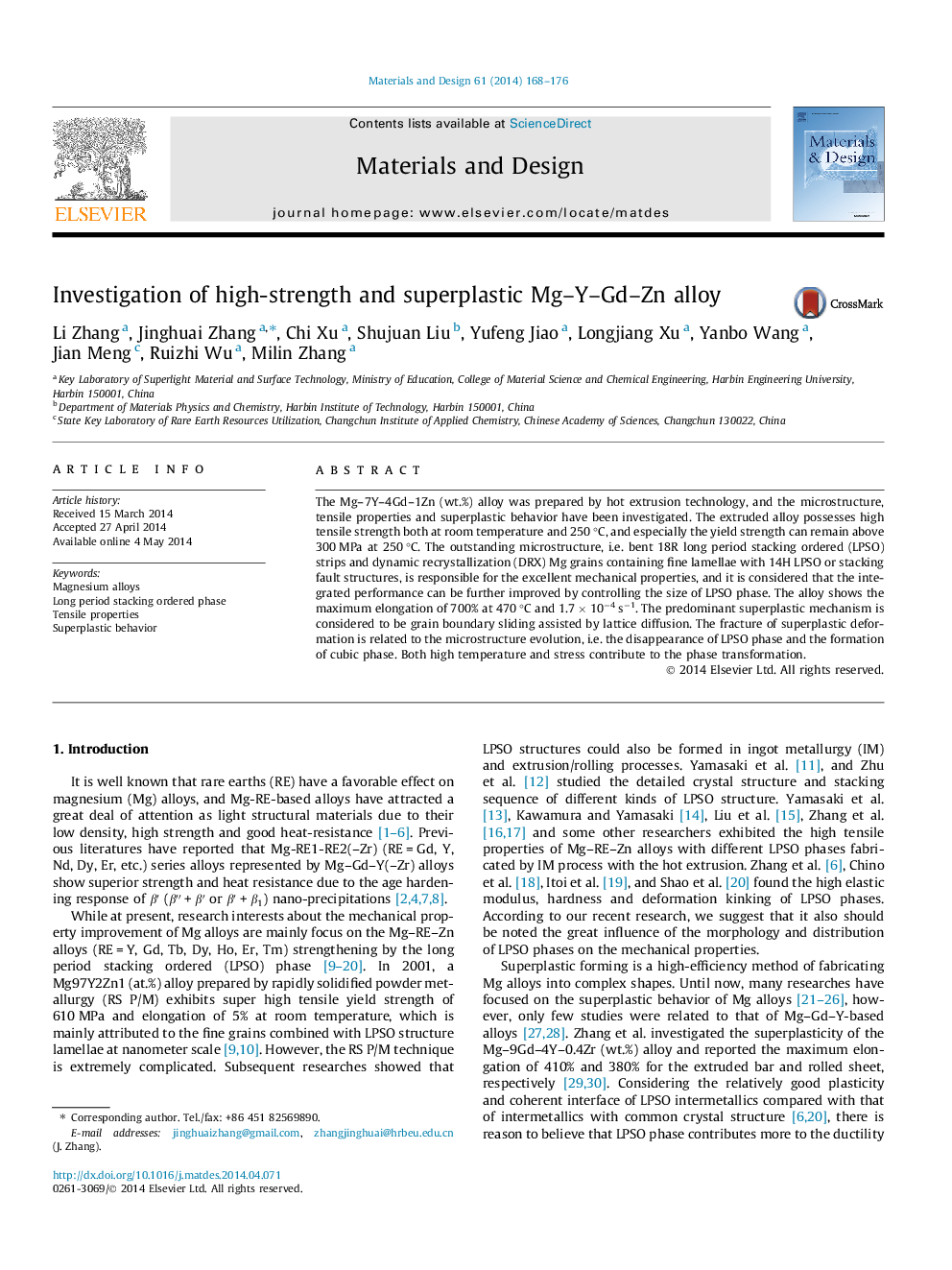| Article ID | Journal | Published Year | Pages | File Type |
|---|---|---|---|---|
| 829145 | Materials & Design (1980-2015) | 2014 | 9 Pages |
•The 18R and 14H LPSO phases and stacking faults in the alloy were examined.•The yield strength of the alloy can remain above 300 MPa at 250 °C.•The alloy shows the maximum elongation of 700% at 470 °C and 1.7 × 10−4 s−1.•The related mechanisms are analyzed and discussed.
The Mg–7Y–4Gd–1Zn (wt.%) alloy was prepared by hot extrusion technology, and the microstructure, tensile properties and superplastic behavior have been investigated. The extruded alloy possesses high tensile strength both at room temperature and 250 °C, and especially the yield strength can remain above 300 MPa at 250 °C. The outstanding microstructure, i.e. bent 18R long period stacking ordered (LPSO) strips and dynamic recrystallization (DRX) Mg grains containing fine lamellae with 14H LPSO or stacking fault structures, is responsible for the excellent mechanical properties, and it is considered that the integrated performance can be further improved by controlling the size of LPSO phase. The alloy shows the maximum elongation of 700% at 470 °C and 1.7 × 10−4 s−1. The predominant superplastic mechanism is considered to be grain boundary sliding assisted by lattice diffusion. The fracture of superplastic deformation is related to the microstructure evolution, i.e. the disappearance of LPSO phase and the formation of cubic phase. Both high temperature and stress contribute to the phase transformation.
